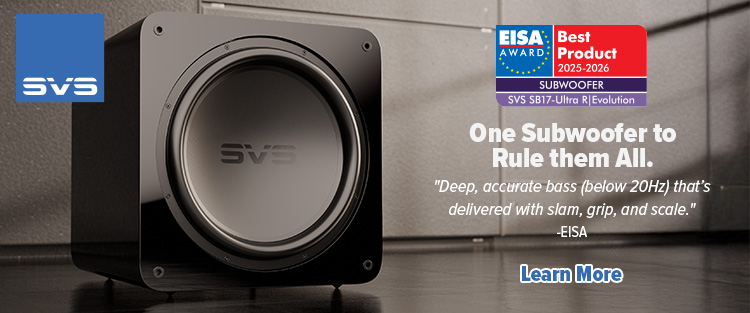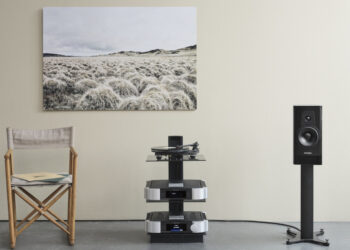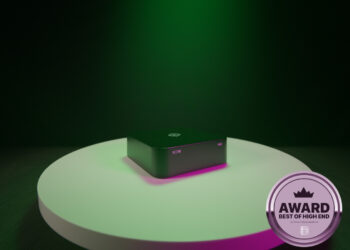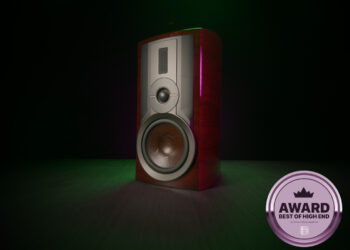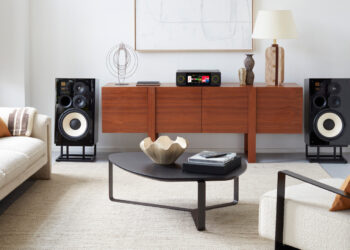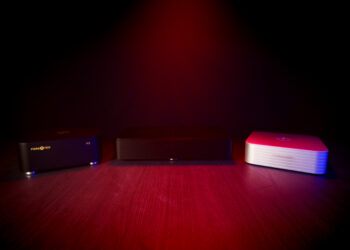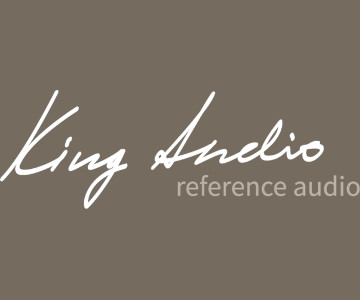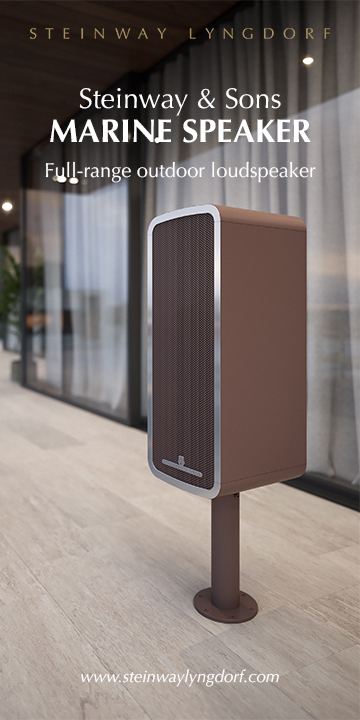“When I was 14-years-old, I built my first amplifiers and years later, my first DIY speakers. My dream was always to build the best speakers in the world,” says Daniel Emonts, Chief Technology Officer of Revival Audio.
Reviving the dream
In 2021 he left Dynaudio to literally “revive” his dream of creating audio perfection when he launched Revival Audio with Jacky Lee, Chief Commercial Officer, who also came from Dynaudio. Based in Alsace, France, they released their first two speakers, the Atalante 3, a two-way bass reflex standmount speaker that is rear ported, and the flagship Atalante 5, three-way model in 2022. That was followed last year with the launch of the Atalante 4, floor-standing speaker.
In creating the Atalante line, they wanted to create a speaker that is “an art piece of sound.” So they turned to the French and Japanese designer duo of Aki and Arnaud Cooren of A+A Cooren Design Studio based in Paris, France. They came up with the stunning retro design of the speaker cabinet.
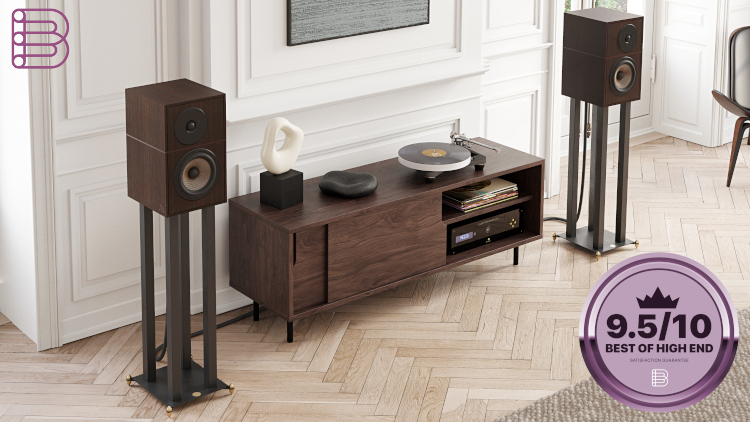
All Atalante speakers feature an inlay, just above the midpoint, that goes completely around the cabinet, meeting on the front baffle with a laser-etched Revival Audio logo. Until recently, the speaker cabinet was only available in a walnut veneer finish, but Revival Audio has just announced a second option in ebony.
Daniel also led much of the development of the new driver technologies that eventually found themselves into the Dynaudio Evoke 20 speakers which I recently reviewed here. I gave that speaker an overall score of 9 out of 10 and was particularly impressed with how it was the “Goldilocks” of speakers for sounding consistently good with every recording I played on it.
So, when Jacky got back to me that there was an opportunity to hear Daniel’s latest creation, I jumped at the chance to compare it with the Evoke 20. But before I auditioned the Atalante 3, I was curious to know where the name “Atalante” came from. Jacky says the name pays homage to the Atalante car designed by the French designer Jean Bugatti way back in 1934. Bugatti named the car after Atalanta, the skilled and swift-footed human huntress from Greek mythology. The Atalante is considered one of the most desirable Bugatti models, as only 17 cars were ever made, and like the current speaker of the same name, boasted an entirely new design for its time.
Inside the Atalanta 3
As beautiful as the exterior of the speakers are, even more impressive is the cutting edge technology utilized within. Daniel is particularly proud that every detail of the speaker is designed and engineered at their laboratory in Alsace by him and his engineers.
For example, the speaker crossovers are all tuned by hand and utilize Van Den Hul’s Skyline Hybrid “Halogen Free” cables. Each lead combines 19 high-purity oxygen free copper strands with a coating containing Van Den Hul’s linear structured carbon.
The Atalante 3 also features a 28mm soft-dome tweeter and its built-in ARID (Anti Reflection Inner Dome) patented technology along with specialized back-chamber design, that Revival Audio claims can absorb over 95% of speaker resonance. More on this uniquely designed tweeter in a moment.
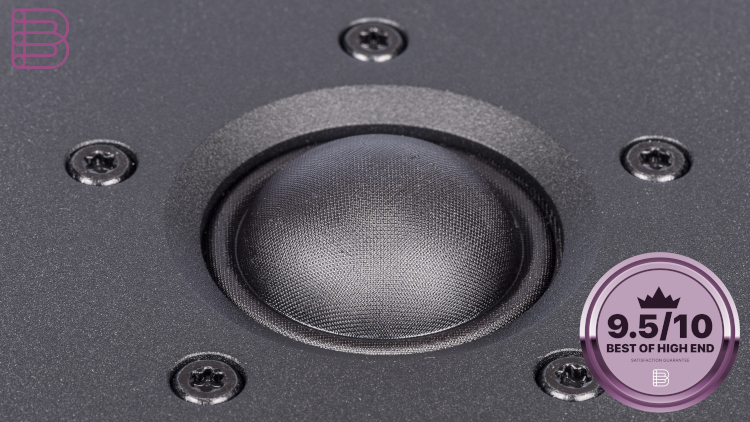
The tweeter on each speaker is offset, not centred. Revival Audio recommends the tweeters face out if the speakers are less than 3 metres apart, or faced in if they are more than 3 metres apart. The speakers are fitted with two magnetic grey fabric grilles; one covers the tweeter driver and a second the woofer. I removed the grills when auditioning them and must say I prefer how they look without the grilles.
Revival says the Atalante 3 utilizes the first-ever BSC (Basalt Sandwich Construction) 7” woofer in a high-end speaker. It was chosen because Daniel found it to be the best balance between rigidity and light weight, with its damping construction providing the fast and smooth responses with tight bass dynamics that he sought.
Rated at 87dB sensitivity and a nominal impedance of 6 ohms, I expect these speakers should be easily driven by any moderately powerful amp. But, as with any speaker, proper amp matching is important to maximize performance.
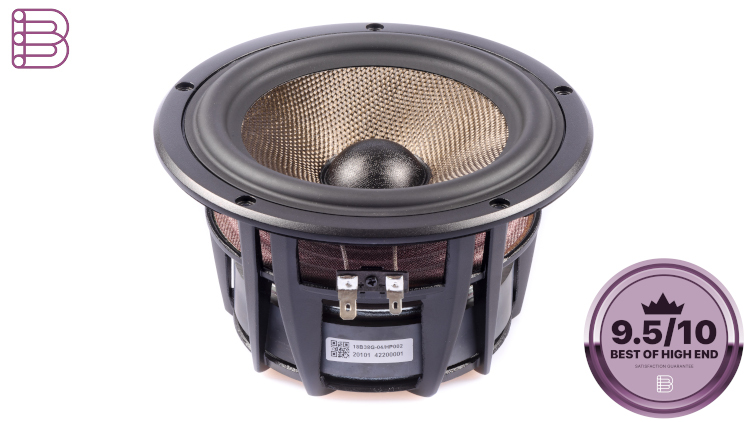
The Evoke 20 and Atalante 3 are priced similarly, with the Evoke 20s currently selling for just over €2.000/$2.185 U.S., and the Atalante 3 for €2.380/$2.600 U.S., with an additional €399/$435 U.S. for the Atalante Stand 3 matching stands. The Stand 3 was designed in collaboration with the A+A Cooren Design Studio to ideally match the dimensions of Atalante 3.
With a height of 599 mm (without feet or spikes) the solid iron 4-leg stands place the Atalante 3s, which weigh 11 kg, at the ideal height to line up with your ears when sitting. I also appreciated that you can bolt the Atalante 3 speakers, which measure 390 mm high x 240 mm depth x 270 mm width, to the stands to ensure a secure mount. Though I would have appreciated it if they had also built in some speaker cable management into the design of the stands. Nevertheless and not surprisingly, the speakers look impressive placed on the stands for which they were specifically designed.
Review system setup
In auditioning the Atalante 3 speakers, I positioned the speakers approximately 2.5 metres apart, slightly toed-in and about 45 cm from the rear wall. While Revival Audio recommends at least 30 cm space between the speaker and the rear wall, it’s worth noting I found they still performed well as close as 15 cm to the wall.
So if you are tight on space, the Atalante 3’s fairly small footprint and flexible placement make it a great match for small to medium-sized rooms. If you do have to place the speakers very near a wall, you can used the supplied port plugs to reduce the bass if needed.
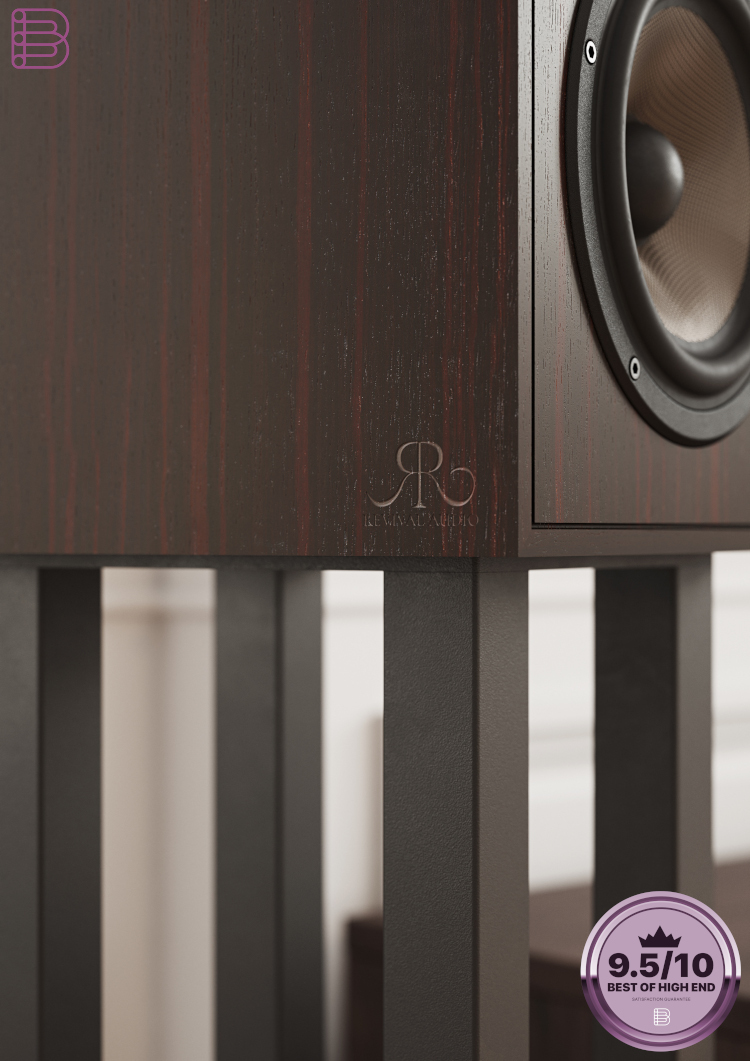
I filled the Stand 3’s legs with sand and, to further isolate the speakers, I replaced the included stand spikes with Auva 70 isolators from Stack Audio (I’ve previously used these on several speakers where they have made a noticeable difference in tightening up the bass and opening up the midrange and treble). In auditioning them I compared them with the Dynaudio Evoke 20s, which were placed on their matching sand-filled Stand 20s and also replaced their speaker spikes with Auva 70 isolators.
Both speakers were connected to my Kinki Studios EX-M1+ integrated amplifier. For my main audio source I used a Schiit Bi-frost 2/64 DAC and Volumio Rivo streamer. Like the Evoke 20s, I burned in the Atalante 3s for more than 100 hours before testing them. So let’s find out how close Daniel has gotten to achieving his dream of achieving audio bliss.
Sensational soundstage !
Both the Evoke 20 and Atalante 3 benefit immensely from excellent drive integration of the treble and bass. The Evoke 20, as I previously stated in my review, excels at providing a relaxing and forgiving sound signature. In comparison, the Atalante 3 immediately gave me goosebumps with its tremendous soundstaging (both wide and deep) and its notably better detail retrieval that pulls you into the music. This is an engaging speaker!
When I played well-recorded performances on the Atalante 3s I felt like I was literally in the recording studio with the musicians. That also means I found the Atalante 3 speakers a little less forgiving of bad recordings than the Evoke 20. However, I also found the more I listened to the Atalante 3s, the more I wanted to pull out older recordings to hear a level of detail I had only been able to previously hear with expensive headphones.
Even though the Atalante 3 is “only” rated at 44Hz – 22kHz (-3dB) compared to the Evoke 20’s stated 40 Hz – 23 kHz (-3dB) I found the Atalante 3’s bass went at least as deep as the Evoke 20, but did so while being noticeably quicker and more controlled.
The instrumental layers to songs were also more clearly separated with the Atalante 3. The soundstage is dramatically wider and deeper than the Evoke 20 and it consistently pulls more detail from each track. Overall, compared to Atalante 3, the Evoke 20s lack the extension and air in the treble that the Atalante 3 provides. That the Atalante 3’s new soft-dome tweeter technology outperformed the very impressive Cerotar tweeter in the Evoke 20 is huge accomplishment.
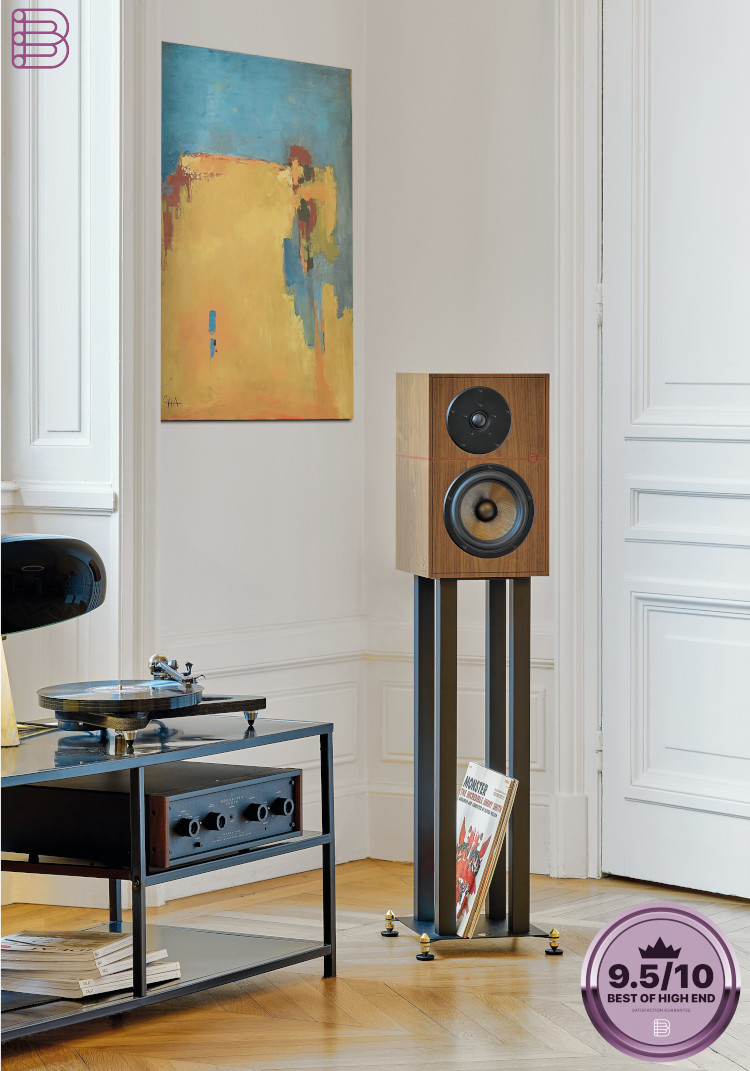
In my auditioning, I replayed all the songs I tested in my Evoke 20 review on the Atalante 3s. I began with Royal Wood’s “In the Garden,” where the speakers did a marvelous job of conveying the timbre of Wood’s piano. It masterfully captured the transients of the piano, but at the same time there was never any undue brightness.
Moving on to “Time” from Hans Zimmer, a particularly challenging recording for many speakers, it really highlighted the Atalante’s ability to remain composed even while playing the complex and demanding orchestration contained in this score.
I was equally impressed with how engaging the speakers were when playing “The Grants” by Lana del Rey. The speakers did amazing job of separating Lana’s voice and that of the gospel choir so you really felt like you were sitting in the church pew just a few feet away.
Even more impressive was how the Atalante 3s captured Holly Cole’s voice in “Trust in Me” and made it sound so dynamic while expertly controlling the sibilance in the recording which can cause fits for even high-end speakers.
The final track I queued up to test the Atalante 3’s bass response was “I’m Afraid of Americans” (Trent Reznor V1 remix) by David Bowie. With its driving bass and distorted guitars, it’s a great test of speaker’s lower frequency capabilities and these speakers did a marvelous job of producing deep bass punch while remaining coherent and super quick.
Conclusion
The Dynaudio Evoke 20 has the type of sound signature in that you can listen to it all day without getting fatigued. In contrast, the Atalante 3 provided a more exciting listening experience because I was constantly drawn into the music – its audio signature, while neutral, was just so exciting and musical.
The Atalante 3 was particularly impressive in how it accurately reproduced the most complex passages while still remaining highly musical in its sound signature.
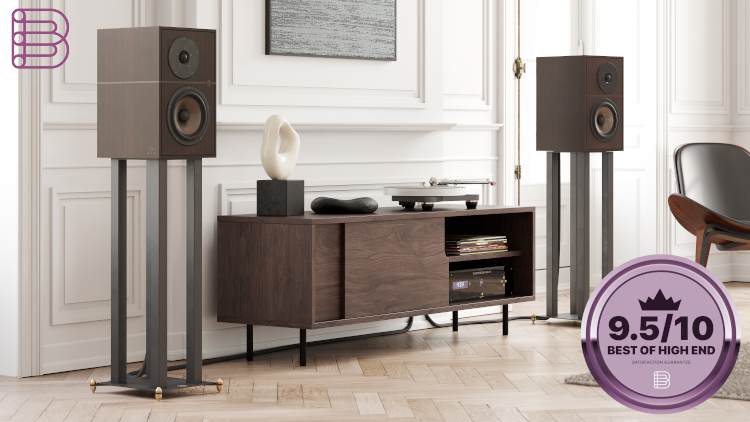
After listening to your latest creation Daniel, you can tell your 14-year-old self I think you are closer to your dream today than ever.
Software tracklist
- Lana del Rey: The Grants
- Hans Zimmer: Time
- Holly Cole: Trust in me
- David Bowie: I’m afraid of Americans
- Royal Wood: In the Garden
- Tidal and Qobuz (streaming music services)
Hardware checklist
- Revival Audio Atalante 3 speakers
- Revival Audio Stand 3 stands
- Stack Audio Auva 70 isolators
- Kinki Studios EX-M1+ integrated amplifier with Burson V7 Vivid single op-amps
- Schiit Bifrost 2/64 DAC
- Volumio Rivo streamer
- Teddy Pardo Mini Teddy power supply
- Ricable Cables Invictus Reference speaker cables
- Supra Cables Excalibur USB cable
- Mogami Platinum XLR cables
- Synergistic PowerCell 8SX power conditioner
- Synergistic Foundation SX 12 power cable
- Synergistic Foundation SX 10 power cables
Technical specifications
- 1 1/8” (28mm) soft-dome tweeter equipped with Revival Audio ARID (Anti Reflection Inner Dome) patent technology with a large back chamber with low resonance frequency of 520Hz
- 7” (18cm) BSC (Basalt Sandwich Construction) woofer
- Frequency Response (+/-3db) 44Hz – 22kHz (-3dB)
- Sensitivity (2.83V/1m) 87dB/2.83V/1metre
- Nominal Impedance 6 ohms
- Minimum Impedance 4 ohms at 175Hz
- Crossover Frequency 8kHz
- Recommended Amplifier Power Power handling: 150 watts, starting from 30 watts.
- Recommended Room Size 15 to 35 m2
- Dimensions (H*W*D) 390 mm x 240 mm x 270 mm
- Net Weight 11 kg. (24.25 lbs.)
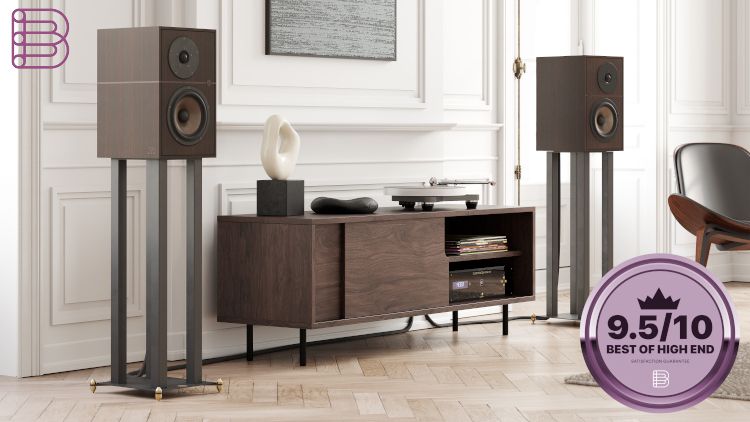
Price
Revival Audio, Atalante 3: €2.380/$2.600 U.S.
Revival Audio, Stand 3: €399/$435 U.S.
Revival Audio Atlanta 3
€2.380/$2,600 U.S (without stands)The Atalante 3s truly represent the “best of high end” and have earned a place in my reference system. For their price, they come with my highest recommendation and are a must audition for anyone considering a standmount speaker in the 2.000 to 4,000 euro/dollars U.S. price range.




